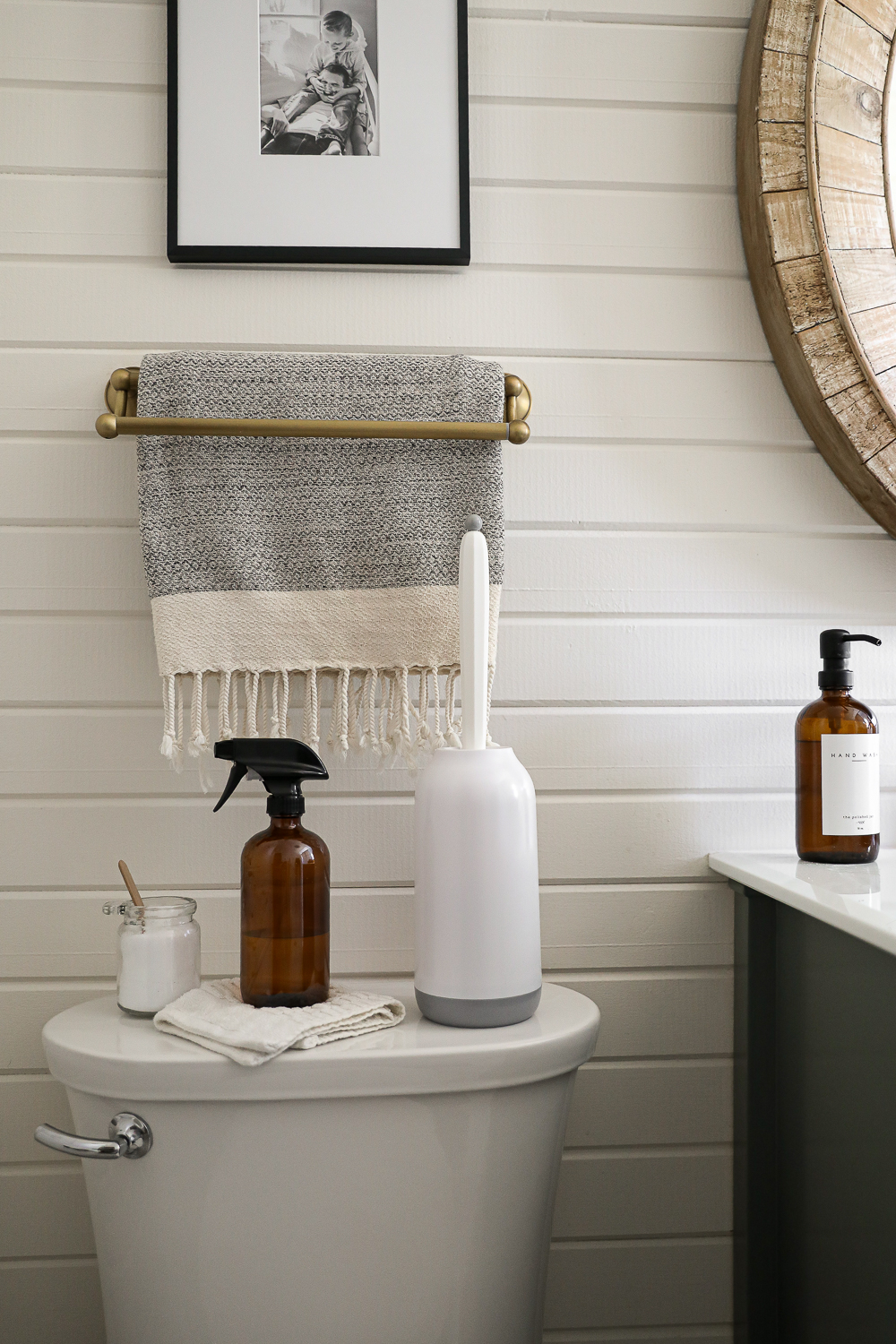
Let’s be honest: cleaning the toilet isn’t exactly the most glamorous side of homemaking, but it’s something every one of us has to deal with. I like to think I keep a pretty tidy house, yet the one thing that has always challenged me is how to keep toilets clean and odor-free. I used to think a squirt of cleaner and a quick scrub were enough… but it turns out there’s a little more to keeping hard water stains and lingering odors away.
I wanted to find products that keep our bathroom fresh day after day without relying on harsh chemicals and finally landed on a routine that actually works. It uses non-toxic products that are gentle but surprisingly powerful, plus a couple of cleaning tools that make a huge difference (you’ll never go back to a regular toilet brush). I also found a disinfectant that’s one of the safest things you can use around kids and pets, and a homemade citric acid spray that handles hard water like a champ.
Here’s the full system: a quick daily reset, a weekly deep clean, and a monthly mineral-removal routine. It keeps the toilet clean, odor-free, and germ-free without any of the harsh stuff. Let’s walk through every step in order.
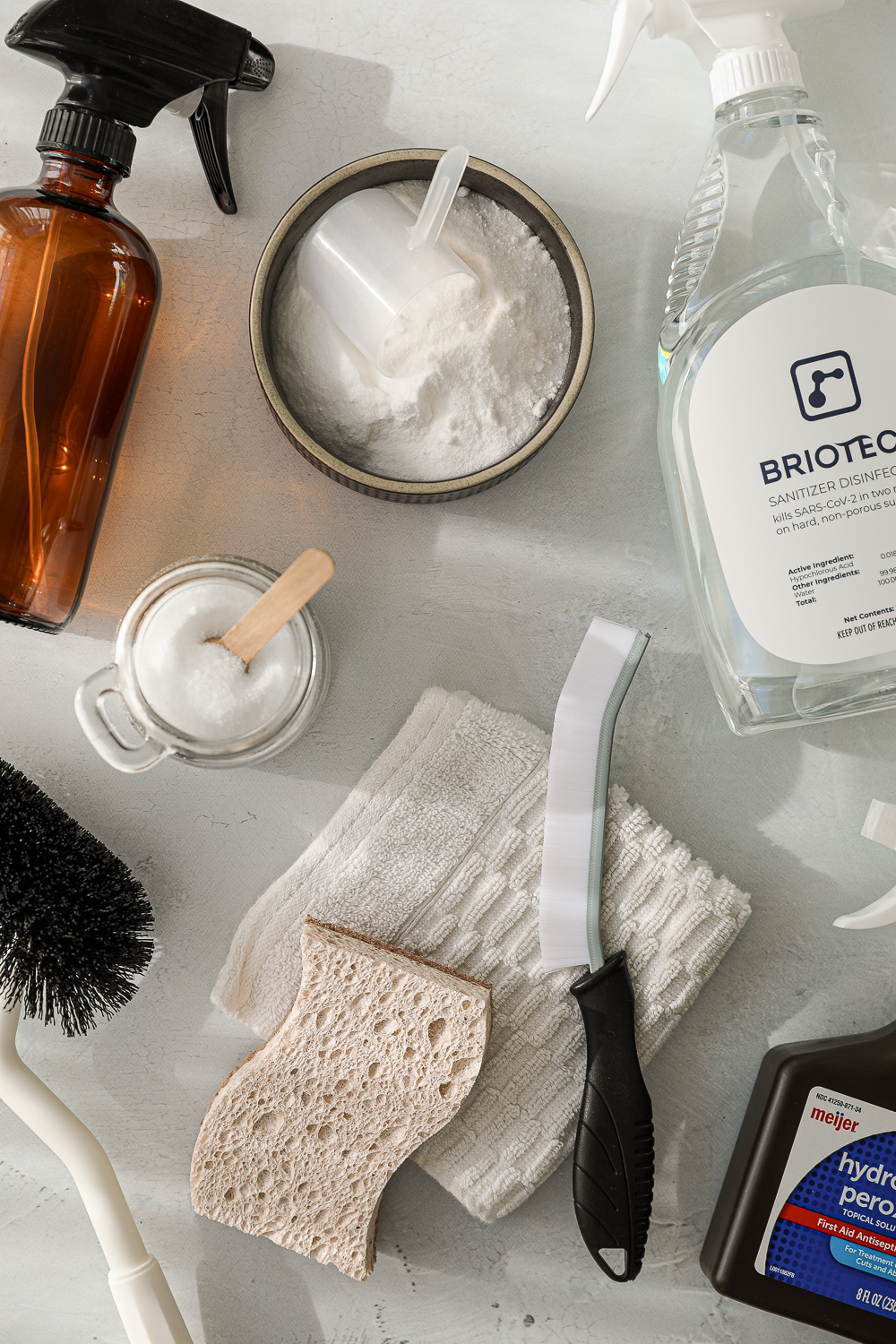
Why This Routine Works
- Natural, non-toxic ingredients that still deliver real cleaning power
- Simple tools that reach spots your regular toilet brush never could
- A daily disinfecting step that takes seconds but keeps odors and bacteria away
- A monthly citric acid treatment to break down mineral buildup before it becomes a problem

Daily Routine: Quick Disinfecting With Hypochlorous Acid
This tiny step is what keeps the bathroom smelling clean without doing a full scrub every day.
Hypochlorous acid (HOCl) is a gentle, skin-safe, food-safe disinfectant that your own immune system actually produces to fight infection. It’s one of the safest ways to kill bacteria and viruses in your home, and you don’t need to rinse it—just spray and walk away. If you want to wipe afterwards, you can, but you don’t have to.
Where to Use It Daily
- Toilet handle/lever
- Toilet seat, tank, and lid
- Outside of the toilet bowl
- Floor around the toilet
- Sink faucet + handles
- Bathroom countertops
- Light switches
- Door handles + cabinet pulls
- Shower handles + knobs
- Bathtub edges
- Trash can lid + rim
- Bath toys
Other Places in the Home
It’s great for kitchen counters, highchairs, doorknobs, toys, remotes, phones, tablets, pet beds, upholstered furniture, and more.
A Few Notes
- Avoid unsealed wood, unsealed stone, and delicate fabrics
- Store in a cool, dark place (a dark opaque bottle is ideal)
- Don’t mix with other cleaners, even natural ones
A quick spray on high-touch areas each day keeps odors and germs from building up—and honestly, it takes less than a minute.
SHOP DAILY ROUTINE:
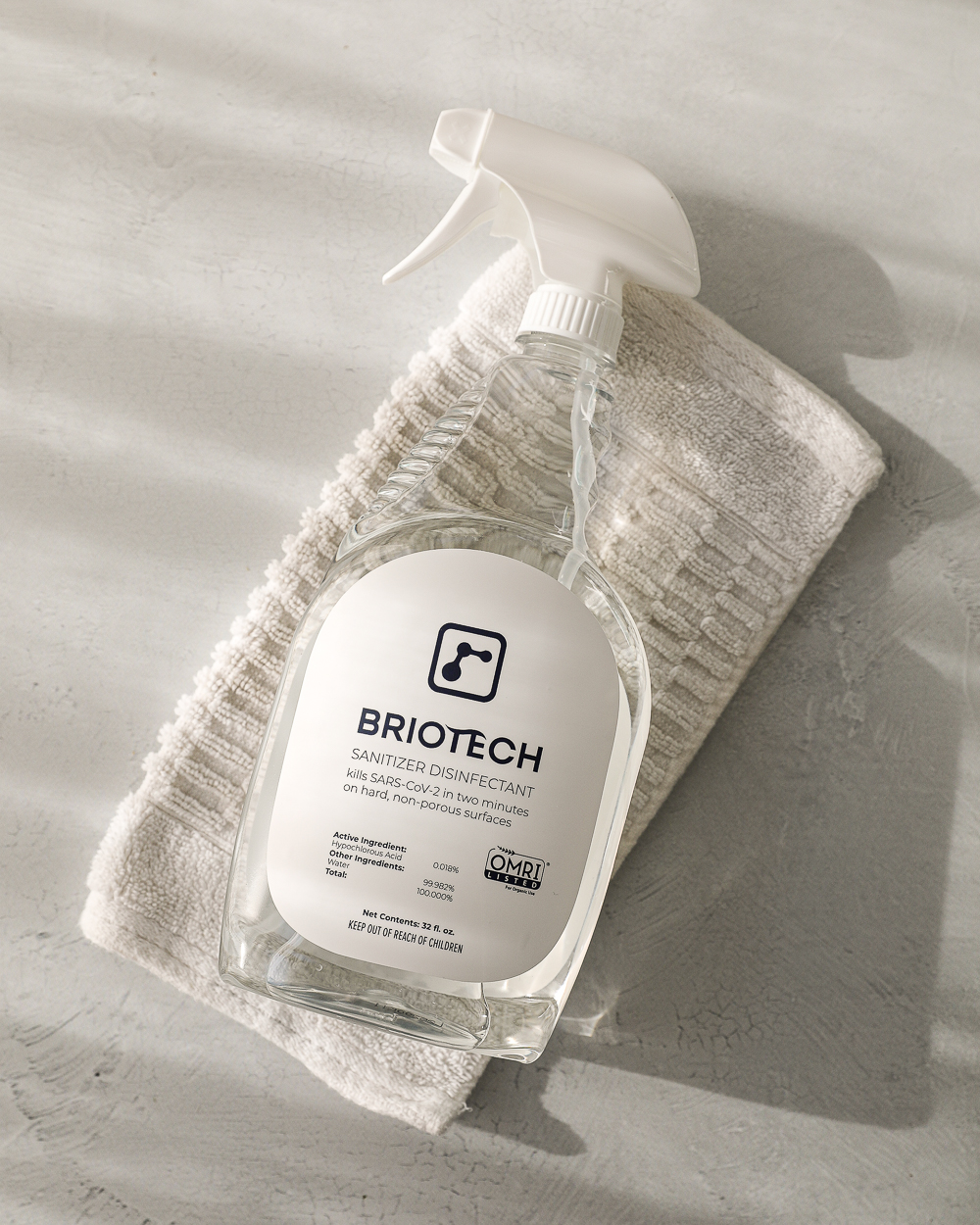
Weekly Routine: Natural Deep Clean
This is the routine that completely changed the game for me. It lifts stains, deodorizes, and keeps the whole bathroom smelling fresh.
Step 1: Borax Overnight
Add ½ cup borax to the toilet bowl.
Brush it around the entire bowl, focusing on stains.
Let it sit overnight.
Step 2: Add Vinegar
The next morning, pour 1 cup of vinegar into the bowl.
Let it sit 15–20 minutes.
Scrub and flush to rinse.
Step 3: Disinfect With Hydrogen Peroxide
(Never mix vinegar with hydrogen peroxide. Always rinse thoroughly between steps.)
Spray 3% hydrogen peroxide inside the bowl and all over the outside—handle, tank, seat, base, and floor around the toilet.
Let it sit 20–30 minutes.
The borax/vinegar step cuts through mineral deposits and general grime, but the hydrogen peroxide is needed to disinfect and lift tough stains.
Step 4: Scrub + Wipe Down
Scrub the bowl again and flush.
Use a crevice brush to clean the gap between the toilet base and the floor—this is where odors hide.
Wipe the outside of the toilet with a clean cloth, starting at the top of the tank and working downward.
Step 5: Sanitize the Brush
Spray your toilet brush with hydrogen peroxide before putting it away.
SHOP WEEKLY ROUTINE:
borax | cleaning vinegar | 3% hydrogen peroxide spray | curved toilet brush | crevice brush | microfiber cloth
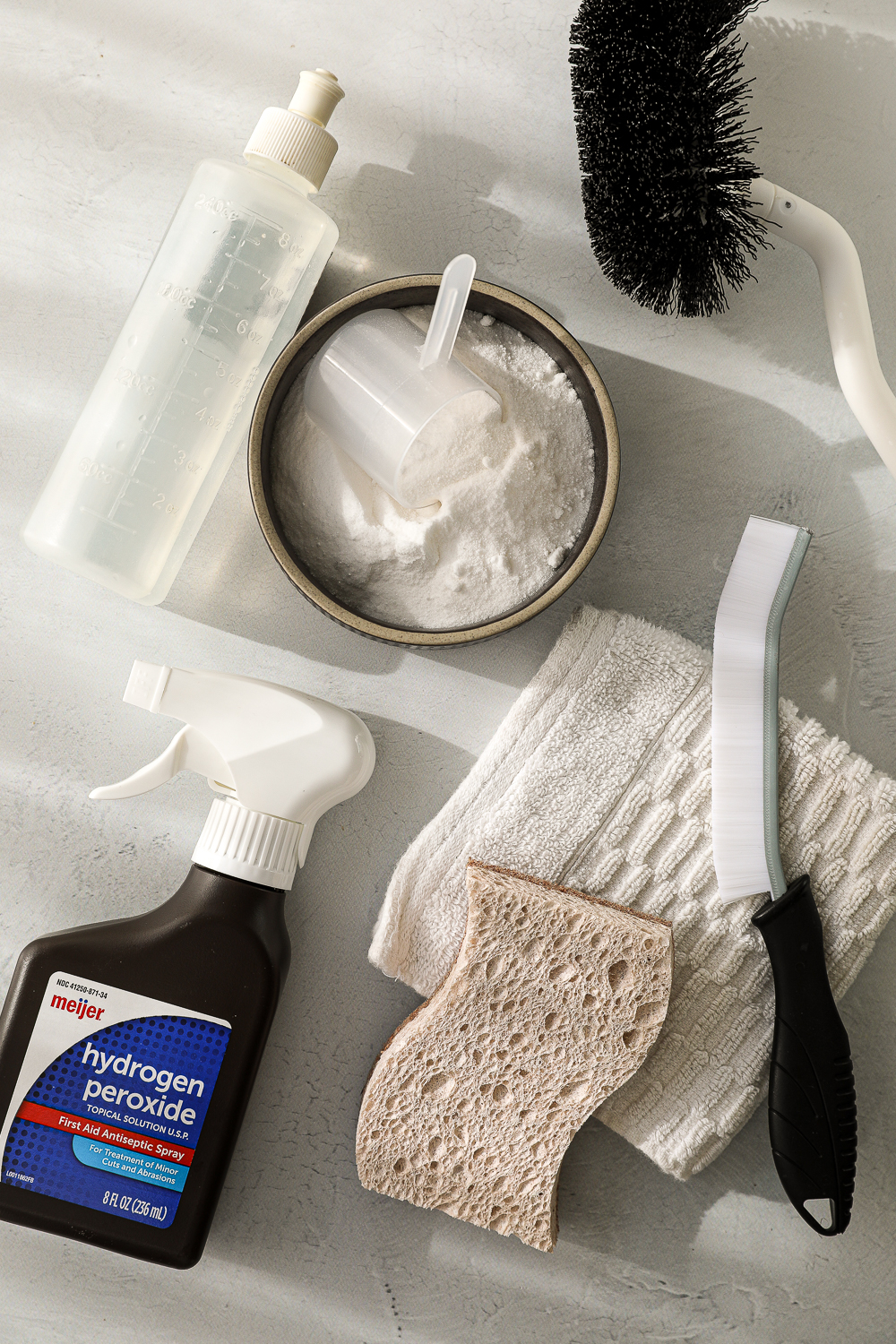
Monthly Routine: Remove Mineral Buildup
If you have hard water, this will save you. It keeps stains, crusty buildup, and rust rings from forming.
Step 1: Citric Acid in the Tank
Mix 2 tablespoons citric acid with 1 cup hot (not boiling) water.
Pour into the toilet tank.
Let sit 10 minutes.
Flush twice.
(Avoid long soaks. Citric acid can be hard on rubber and metal tank components if left too long.)
Step 2: Citric Acid in the Bowl
Spray your DIY citric acid spray (see below) around the bowl, especially up under the rim.
Then add ¼ cup citric acid + 1 cup hot water directly to the bowl.
Let sit 30–60 minutes, or up to overnight.
Step 3: Scrub + Flush
Scrub thoroughly, focusing on mineral lines and stains.
Flush to rinse.
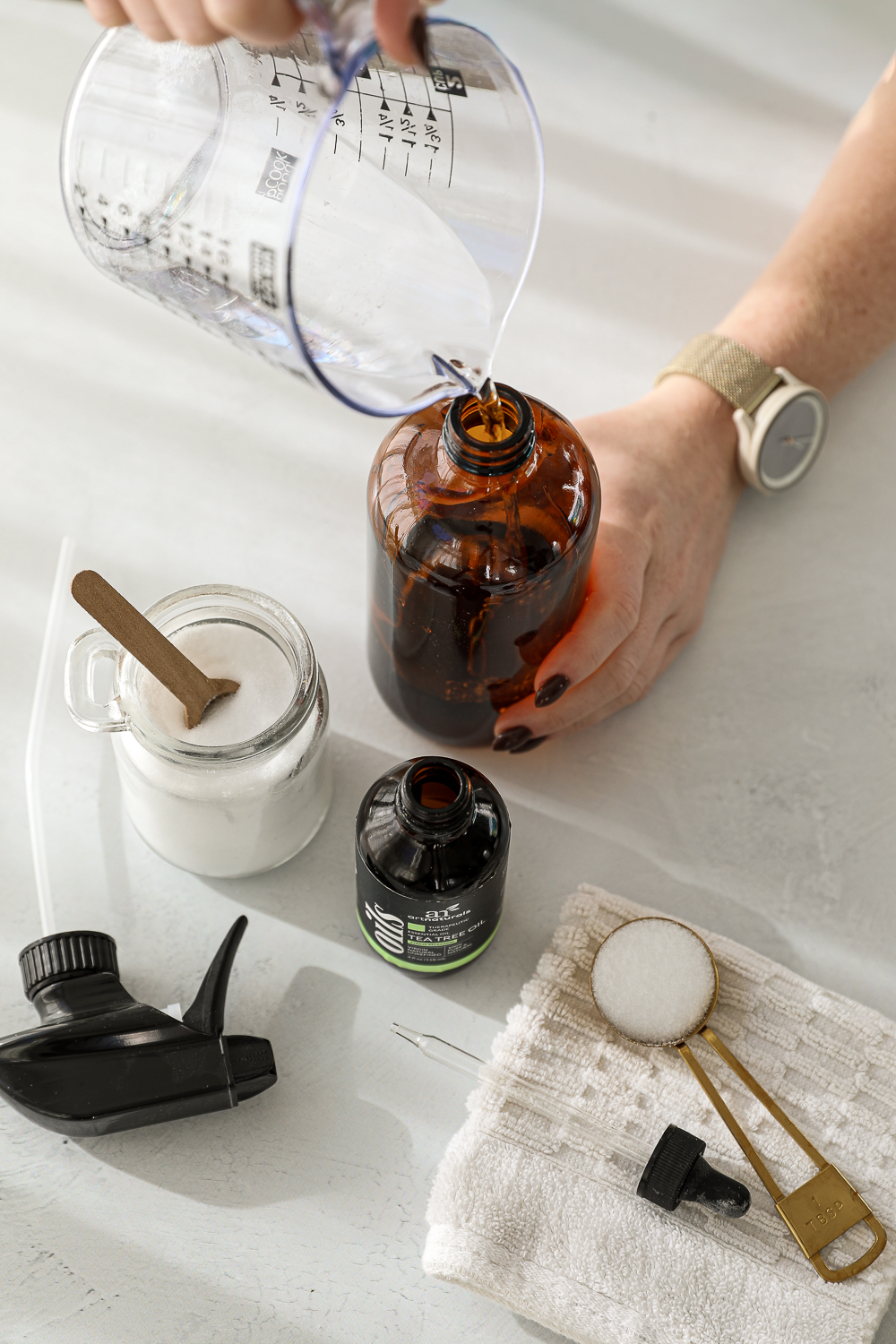
DIY Citric Acid Spray Recipe
This is my go-to for hard water stains, soap scum, mineral deposits, and anything with spots or buildup.
You’ll Need
- Citric acid powder
- Hot (not boiling) water
- Glass spray bottle
- Glass measuring cup
- Measuring spoons
- Optional: essential oil (lemon, tea tree, eucalyptus, lavender)
How to Make It
- Add 2 tablespoons citric acid to 2 cups hot water in a glass measuring cup.
- Stir until completely dissolved.
- Pour into a glass spray bottle.
- Add 10 drops of essential oil if you want a light scent.
- Shake gently to mix.
Tips
Storage: Keep in a glass bottle away from heat and sunlight.
Safety: Don’t use on unsealed wood or natural stone.
Freshness: Best used within a few months. Shake before each use.
SHOP MONTHLY ROUTINE:
citric acid | glass spray bottle | essential oil (lemon, tea tree, eucalyptus, or lavender) | curved toilet brush
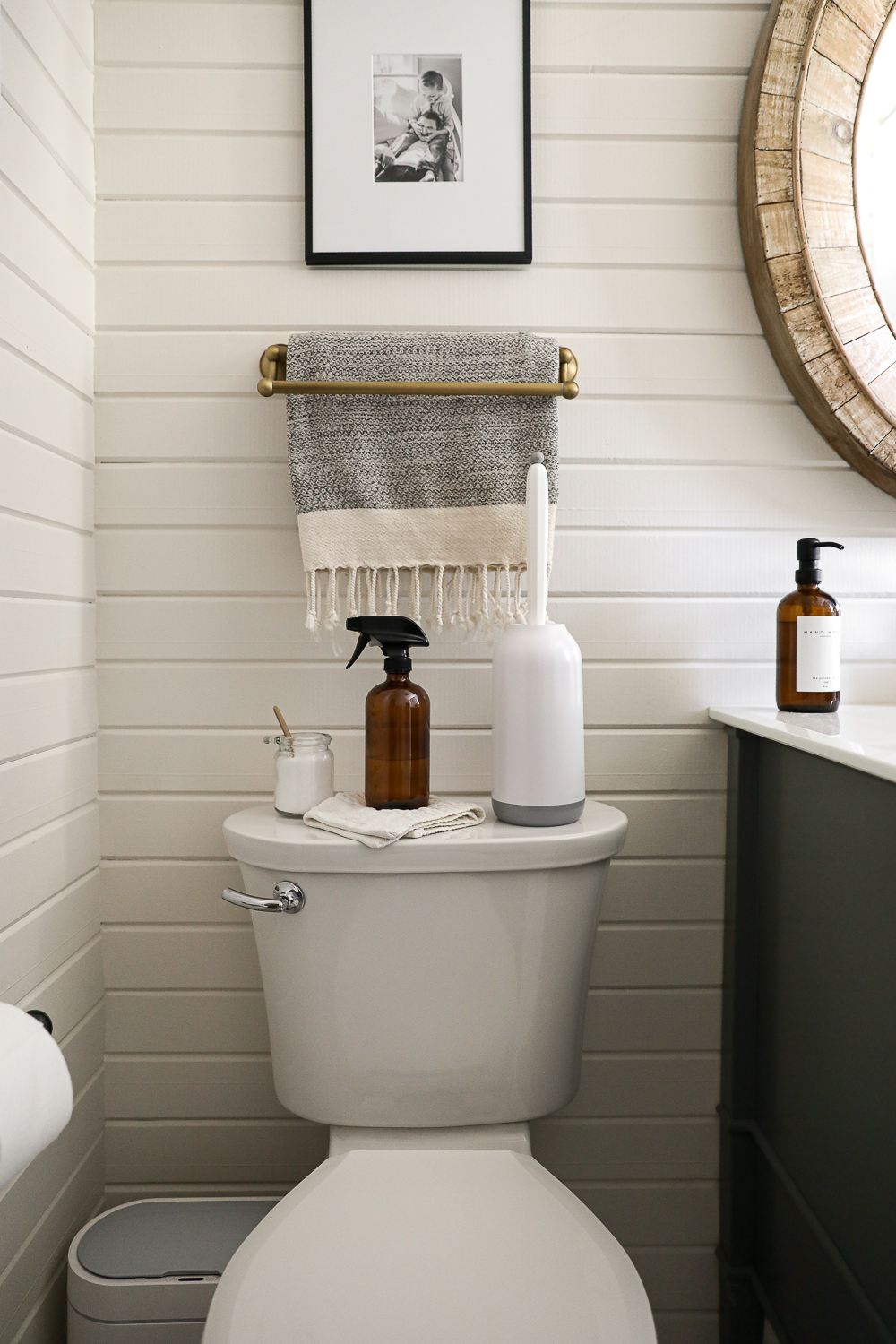
Ways to Use Citric Acid Spray
Bathroom
- Descale showerheads and faucets
- Remove soap scum
- Clean sinks and toilets
- Brighten tile grout
- Remove hard water spots on shower glass
Kitchen
- Clean stainless steel
- Sanitize cutting boards
- Remove stains from plastic containers
- Spot-clean glass or mirrors
- Clean refrigerator drawers and shelves
- Wipe down the microwave interior
Around the Home
- Mineral rings inside vases
- Laundry booster or natural fabric softener
- Descale kettles or coffee makers
- Deodorize trash bins
- Clean non-porous surfaces
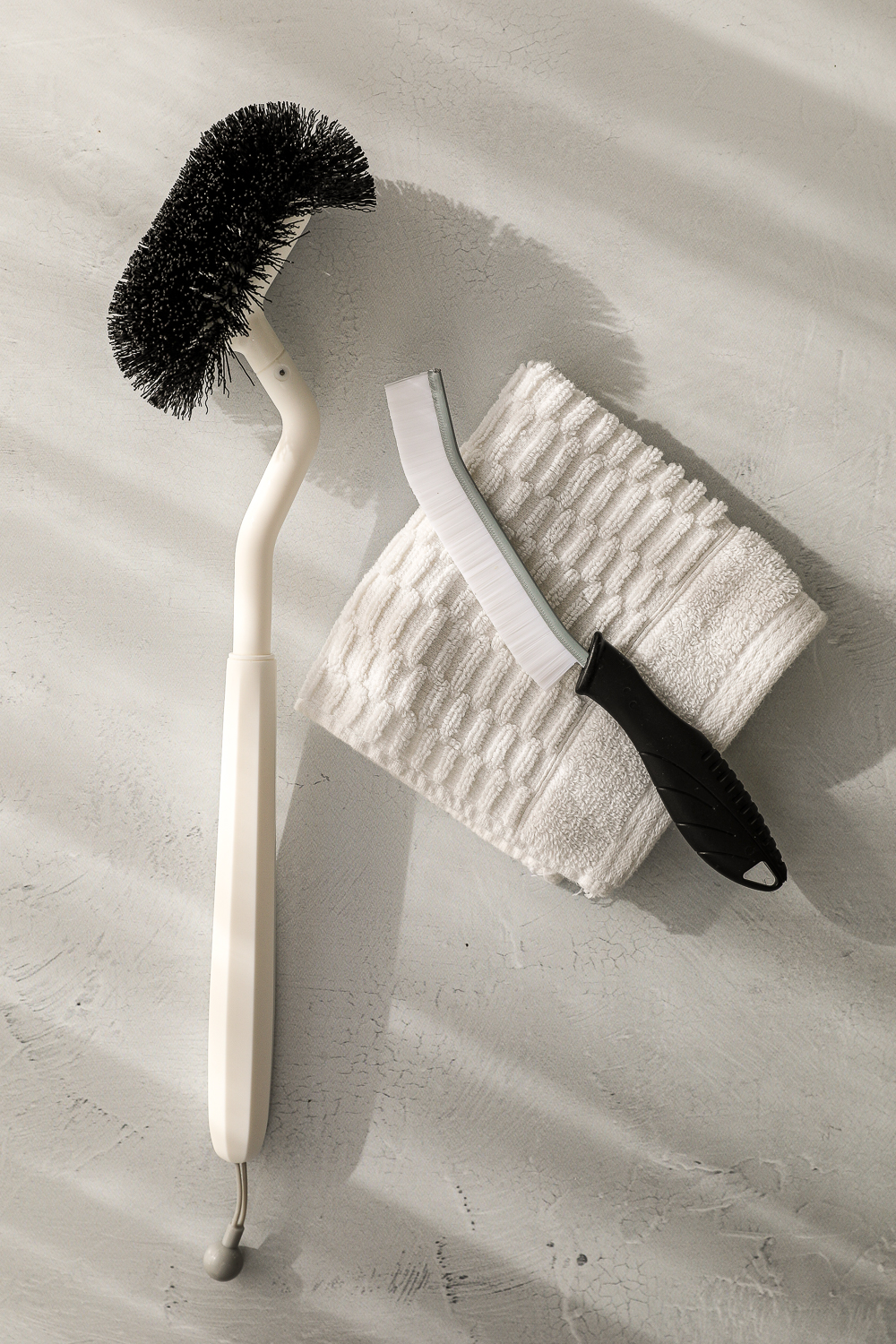
Tools I Recommend
Curved Deep-Cleaning Toilet Brush
This is one of the best upgrades I made. The curved handle and angled bristles help you scrub 360 degrees around the bowl, including under the rim and deep in the drain area — places a standard brush just can’t reach. The ventilated holder also lets the brush dry out instead of sitting in a puddle collecting germs.
Crevice Cleaning Brush
This tiny tool does big work. It reaches the narrow gap where the toilet meets the floor, which is where odors build up. It’s also great for grout lines, around faucets, window tracks, and other tight spaces.
Pumice Stone with Long Handle
This tool is amazing for lifting stubborn hard water rings, calcium buildup, and rust stains. The natural pumice gently buffs away mineral deposits without scratching porcelain. Just wet the stone first, use light pressure, and flush afterward. It’s one of the quickest ways to tackle tough stains and keep the bowl looking bright.
SHOP BATHROOM TOOLS:
curved deep cleaning toilet brush | crevice brush | pumice stone with long handle
Any questions? Any other trouble areas in your home you’d like help cleaning? Let me know!
STAY CONNECTED:
Shop my Posts | Shop my Amazon Store
Join our Community | Follow on Instagram
Follow on Pinterest | Follow on Facebook



Leave Your Comments